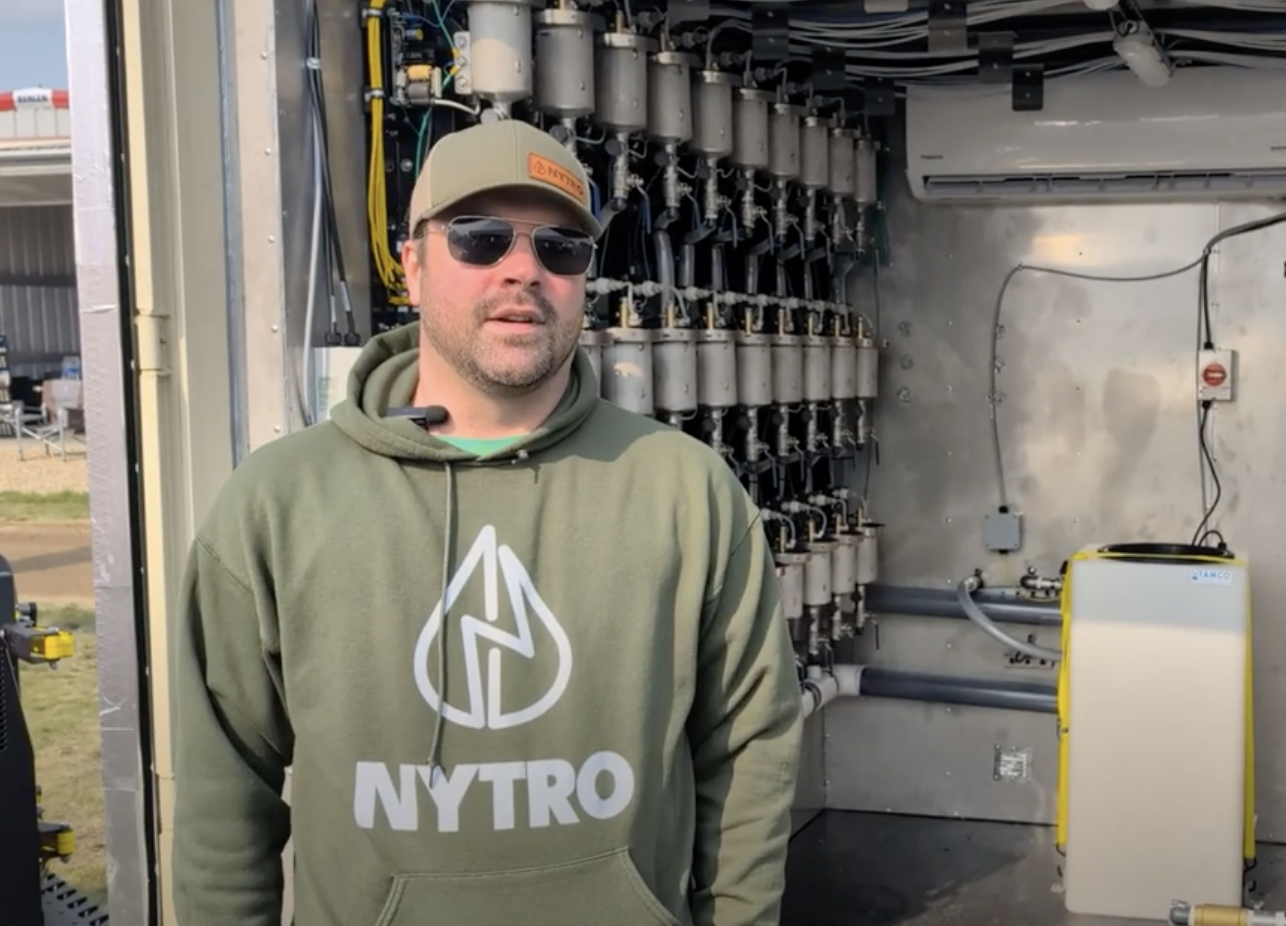MAPLE CREEK, Sask. – A homemade 100 ton brake is an integral part of Skyline Farms.
The father and son team of Ken and Jason Sawby farm together in southwestern Saskatchewan and operate a custom manufacturing business called High Desert Enterprises out of the shop.
The main beams for the brake were taken from an old hotel in Swift Current, Sask., while the uprights are made from I-beams Ken had salvaged.
“The rest of the stuff, most of it I had here,” he said.
Read Also

VIDEO: Green Lightning and Nytro Ag win sustainability innovation award
Nytro Ag Corp and Green Lightning recieved an innovation award at Ag in Motion 2025 for the Green Lightning Nitrogen Machine, which converts atmospheric nitrogen into a plant-usable form.
“I bought the two big cylinders. They’re five by 32s (inches). They work on a lever basis too, so it’s not just pounds push from the cylinders. I’ve got a mechanical advantage of around 4.5 to one, so you’ve got real power.”
Sawby made the slides for the brake, along with dies that were made out of square iron.
“The brake is used to bend plate steel,” he said. “It’ll bend a piece of flat iron 3/16 by eight feet long into a 90 degree. I’m not sure exactly how much push there is on it, but it’s got to be up around 100 plus ton.”
Sawby built a self-contained hydraulic power unit to operate the hydraulic rams at the back of the brake. It has a five horsepower electric motor running a pump that pushes about 18 gallons a minute.
“It’s all pressure compensated. We can screw the pressure up to 4,000 psi if we want, but we generally run it around 1,900. We rarely have to turn it higher,” he said.
“It’s nice and slow. It’s not one of those jerky things. If it’s jerky and hard to control, that’s no good when you’re trying to be precise.”
Sawby mounted a valve on the hydraulic unit where he can plug in orbital motors if he needs to work on equipment that must turn.
“We’ve got another outlet, so if we bring in something that requires hydraulic power we can plug it in and away we go. When we fix a truck hoist, we use it to lift the box up to get it out of the road.”
The reservoir holds about 20 gallons. Sawby said it doesn’t have an oil cooler because it doesn’t run long enough to have any problem with heat.
On one end of the brake Sawby mounted a small Samson shear and a hydraulic hose crimper.
“That’s run with hydraulics but it’s a separate system on the top (of the brake). We have a flow divider where we can run the shear or a hydraulic hose crimping unit. The smaller hydraulic system operates those two tools. That one uses a one hp 220 volt electric motor to power the pump,” he said.
“(For the hydraulic crimper) I built the unit but I bought the dies. We use all Weatherhead hose and fittings. We can do everything from 1/4 inch to one inch.”
Bender built
Sawby built a pipe and square tube bender and mounted it on the other end of the brake. Again, he built the unit himself and then bought the dies.
“We can bend anything from 3/8 pipe up to two inch and make 90s in pipe. Not the heavy drill stem, but straight schedule 40 pipe. I’ve also got dies I’ve built for bending square tube,” he said. “We fold it down to work, but it sticks out so far, so I made a hinge.”
When Sawby needs to bend a number of steel pieces at the same angle, he’s able to do so with an indicator gauge mounted on the brake.
“I’ve got gauges on it, so once you’ve got the first one – say you want 24 degrees – you watch on a dial and you can do repetitive ones.”
Sawby said he has to be careful with that, however, because not all plate bends the same way. Some of it bends harder, but he can come close using the dial.
The brake is used a lot in the fabrication side of the Sawby business.
“For making decks, we fold the sides down with it,” he said.
“We make bulk oil tanks and antifreeze tanks, tool boxes, all sorts of containers. We make portions for the bottom of hopper bins, where it has to be creased. Anything that requires bending, as long as it’s not over 8.5 feet long.”
It also comes in handy for farm repairs.
“We’ve made arms for front end loaders that guys have busted. We grab a piece of 12 gauge or 10 gauge, whatever it takes, make them in halves and weld them together,” he said.
“We’ve brought back lots of front end loaders from the graveyard just by making new parts. It’s an invaluable tool. We’ve used it literally thousands of times.”
For more information, phone Ken and Jason Sawby at 306-662-3311.














